remmoc
Part of things
 
Posts: 931
|
|
Nov 24, 2018 17:05:42 GMT
|
|
Its possible to rewind gauges - or at least rewind the coil providing the coil bobbin can be removed , its also possible to change the voltage from 6V to 12V or vice versa
, ive done a few at work in the past although this was on old Lucas units , principals the same as long as the voltage of the gauge is known , from there the wire size / turns are changed to achieve the required voltage
|
| |
Last Edit: Nov 24, 2018 17:12:12 GMT by remmoc
|
|
|
|
|
|
|
Nov 26, 2018 14:26:38 GMT
|
Took the gauges out again. Dismantled one coil from the armature.  Made a cammed section on the chuck of my drill with electrical tape and fixed it down to the bench. Then set up a small plate with a microswitch that's operated by the cam every rotation of the chuck. 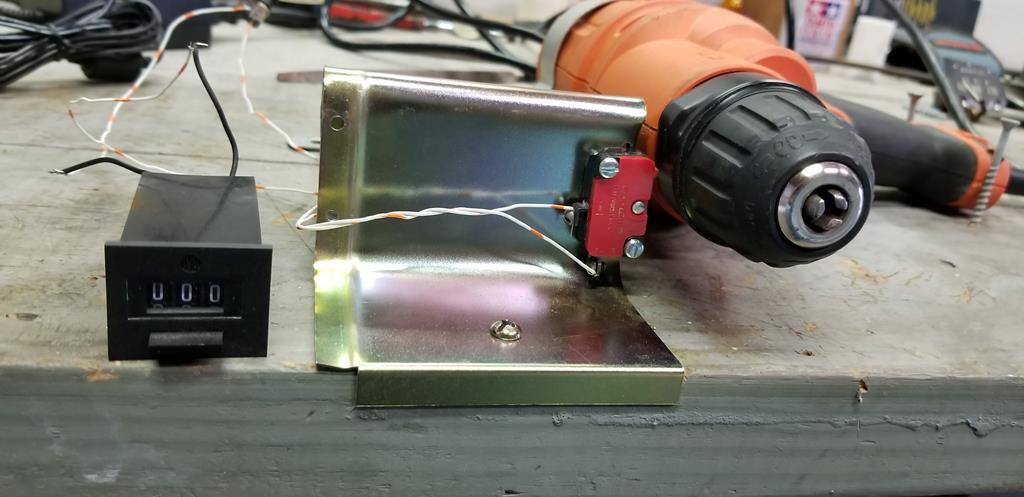 Hooked that up to a small counter and unwound the wire from the coil.  All undone, cleaned up. The wire was all burned up along it's length and had fractured in 3 places. 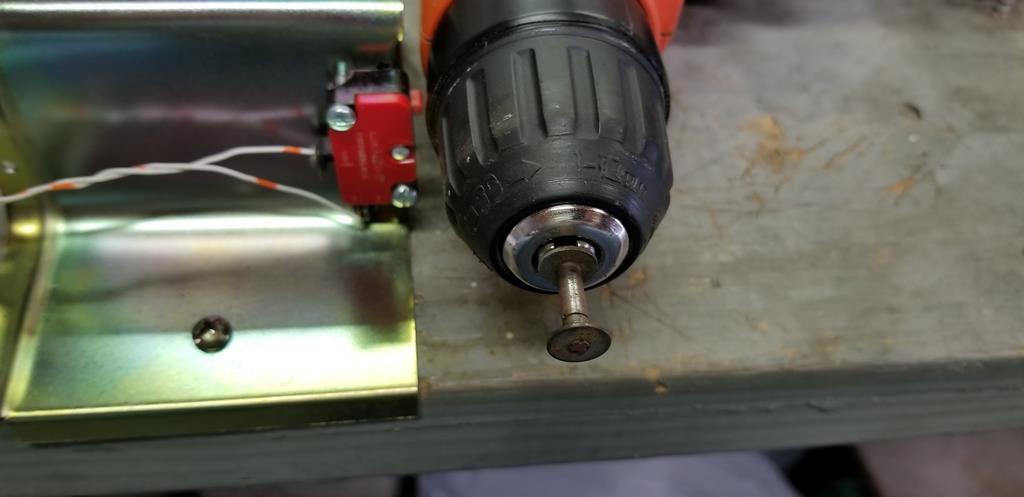 Checked the diameter of the wire with my micrometer. That's 33AWG. 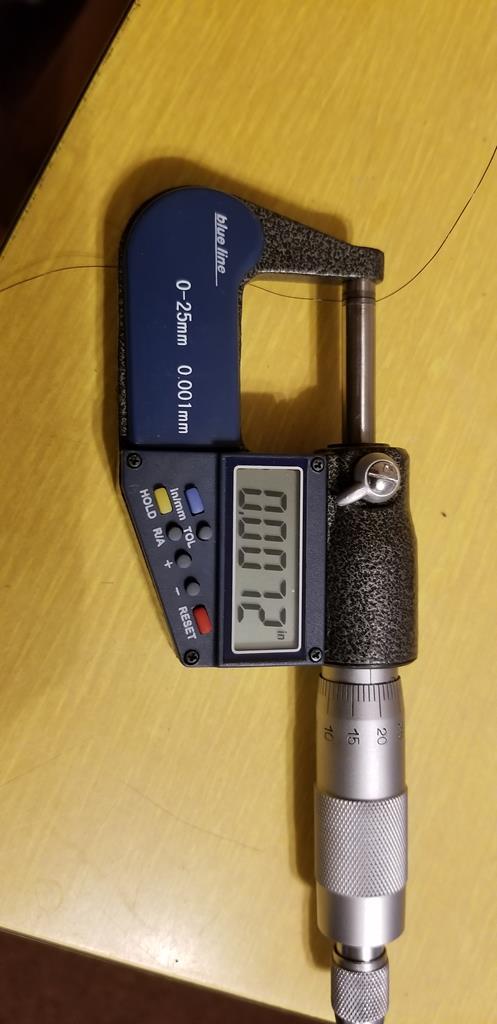 I've ordered a spool of 36AWG enameled copper wire. That has twice the resistance per foot, so the same number of turns on the bobbin will see double the resistance for 12V. I'll wind it and run it up to full power and see how hot it gets. Phil |
| |
|
|
vanpeebles
Part of things
  I am eastbound in pursuit of a white Lamborghini, this is not a recording.
I am eastbound in pursuit of a white Lamborghini, this is not a recording.
Posts: 981
|
|
Nov 26, 2018 14:28:15 GMT
|
Bonus points for use of the word bobbin  |
| |
|
|
|
|
|
Nov 26, 2018 16:26:30 GMT
|
Bonus points for use of the word bobbin  Treble bonus points for use of 'Ingenuity'  |
| |
|
|
|
|
|
Nov 26, 2018 16:33:13 GMT
|
|
I like the way this is assembled. No potted boxes full of things you can't repair.
Phil
|
| |
|
|
remmoc
Part of things
 
Posts: 931
|
|
Nov 26, 2018 21:59:36 GMT
|
I've ordered a spool of 36AWG enameled copper wire. That has twice the resistance per foot, so the same number of turns on the bobbin will see double the resistance for 12V. I'll wind it and run it up to full power and see how hot it gets. Phil Doesnt quite work like that if your changing the voltage , its tricky to explain but its half the turns but double the wire size or the other way around depending on wether your going up or down re. the voltage , by double its not ( hypathetically speaking ) going from say 1mm to 2 mm , its done on wire cross sectional area , we have tables at work that calculate this . No idea what 36AWG wire is as all winding wire is done in MMs or part thereof If you need any help just ask away |
| |
|
|
|
|
|
Nov 26, 2018 23:09:26 GMT
|
Going up the voltage from 6 to 12. 33AWG is 33 circular mils in cross section, 0.033", dia. 0.00708” or 50.13 CM in cross-section. 36AWG is 25 CM in cross-section. Half the circular area. ~1040 turns to go on compared to the original 518. Or am I thinking it backwards? Data from table here: hyperphysics.phy-astr.gsu.edu/hbase/Tables/wirega.html--Phil |
| |
Last Edit: Nov 26, 2018 23:30:34 GMT by PhilA
|
|
remmoc
Part of things
 
Posts: 931
|
|
Nov 27, 2018 13:12:17 GMT
|
Going up the voltage from 6 to 12. 33AWG is 33 circular mils in cross section, 0.033", dia. 0.00708” or 50.13 CM in cross-section. 36AWG is 25 CM in cross-section. Half the circular area. ~1040 turns to go on compared to the original 518. Or am I thinking it backwards? Data from table here: hyperphysics.phy-astr.gsu.edu/hbase/Tables/wirega.html--Phil Your correct in the more turns / smaller wire gauge. Heres a hypathetical example of how we do this at work Multiply the original turns by 1.66 - Example 380 turns x 1.66 = 631 Work out original wires cross sectional area and x by 0.66 , figure obtained is then cross referenced on chart to give new wire size. Example 0.800 original wire size which has a cross sectional area of 0.502 , x this by 0.66 which = 0.33 cross sectional area , size nearest to 0.33 according to chart is 0.63. So 6V was 380 turns of 0.800 12V is 631 turns of 0.63 |
| |
Last Edit: Nov 27, 2018 13:12:35 GMT by remmoc
|
|
|
|
|
Nov 27, 2018 14:03:26 GMT
|
|
Ok, so you wind by 166%, no real harm other than the power factor on mine winding to 200%?
518 turns of 0.52
to
1040 turns of 0.25
?
Phil
|
| |
Last Edit: Nov 27, 2018 15:08:03 GMT by PhilA
|
|
remmoc
Part of things
 
Posts: 931
|
|
Nov 27, 2018 17:17:24 GMT
|
200% has been tried before with good results , its very much a black art and nothing is certain . Sometimes the actual conversion doesnt give the result expected and sometimes an educated guess works just as well . So you say your wire is 0.52 , the nearest i have on this is 0.53 ( thats quite thick  ) Did you burn the coating off the wire before measuring it ?? 518 turns x 1.66 = 860 Cross sectional area of 0.53 = 0.2206 x 0.66 = 0.145596 nearest wire with this cross sectional area is 0.4250 which doesnt exist anymore so we go the next size down which is 0.400 Going on how we would do it here . Original 6V is 518 turns of 0.53 12V done as we do would be 860 turns of 0.400 . I make your 0.0072 inch wire to be 0.18mm so just as an option  Original 6V 518 turns of 0.180 12V 860 turns of 0.140 Its also governed by how much wire will fit on the bobbin which often throws everything out the window anyway , This chart might help with the AWG 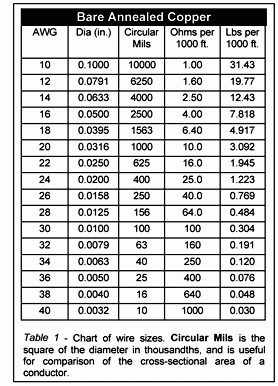 Heres a copy of the wire charts we use i found on the net , just the small stuff is relevant to you - bottom image but i put the larger ones in for the headings 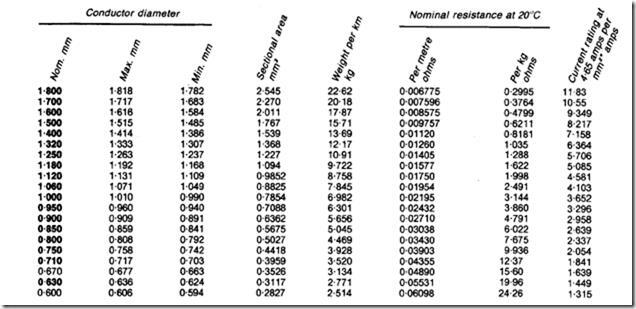  |
| |
Last Edit: Nov 27, 2018 17:50:54 GMT by remmoc
|
|
|
|
|
Nov 27, 2018 17:56:33 GMT
|
I'm just going to have to try it. Already have the thinner gauge wire on order  There was a moderate amount of space left on the bobbin. If this doesn't fit I'll go for 166% if I can. Thank you for the help, and I'm aware it's a bit of an art to get right. The could do have significant adjustment in them and I have the ohms-per-calibrate positions, I believe. Phil |
| |
Last Edit: Nov 27, 2018 18:00:30 GMT by PhilA
|
|
remmoc
Part of things
 
Posts: 931
|
|
Nov 27, 2018 18:31:01 GMT
|
No problem re. the help , only to glad to have a try if i can Its a real minefield , i upgrade alternator stators to give higher output , one starts at 60A and ends up 200A , The amount of trial windings done is mindblowing , once its achieved though its easy the next time . Keep us posted as how how it works out  |
| |
|
|
|
|
|
|
|
New spool of wire arrived in. 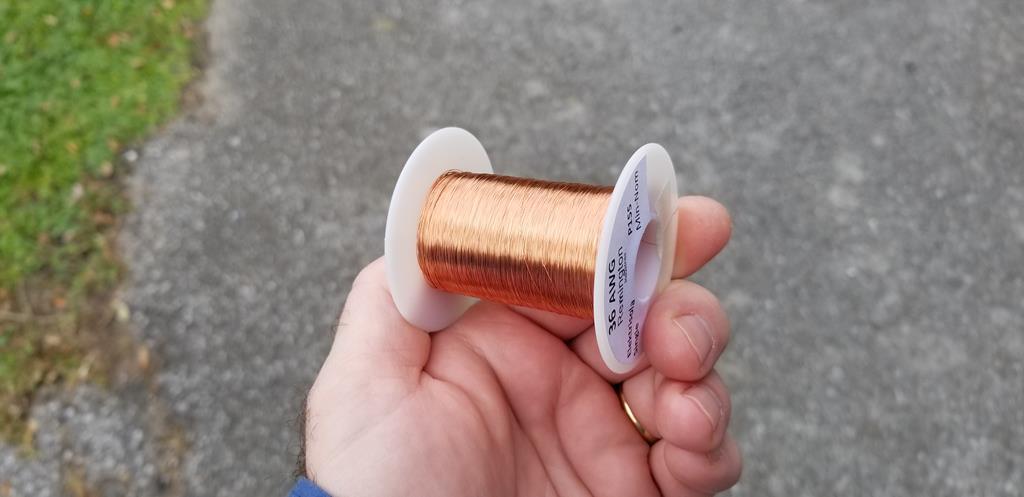 I sanded the lacquer off the last inch or so of the wire and tested it with my meter to make sure it was good. This makes contact with the metal of the bobbin. 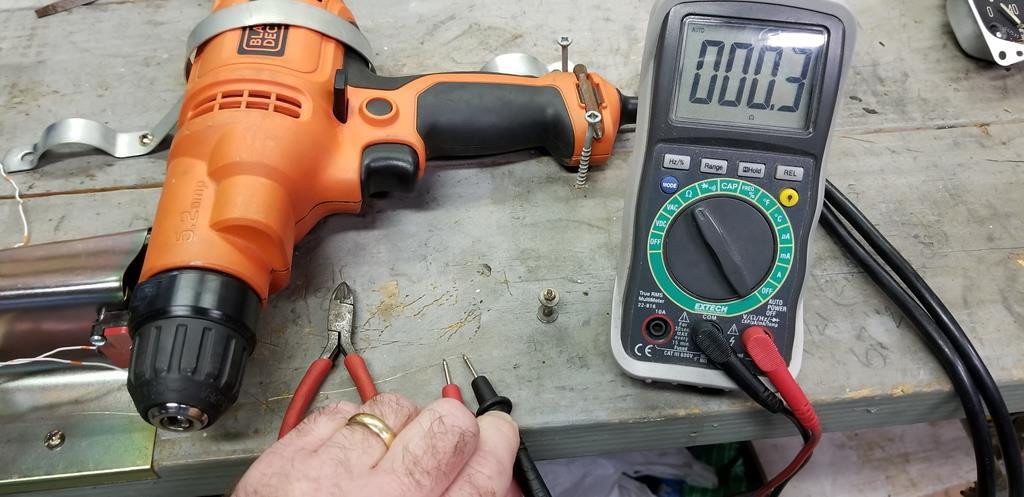 Carefully wound on, counting the turns. 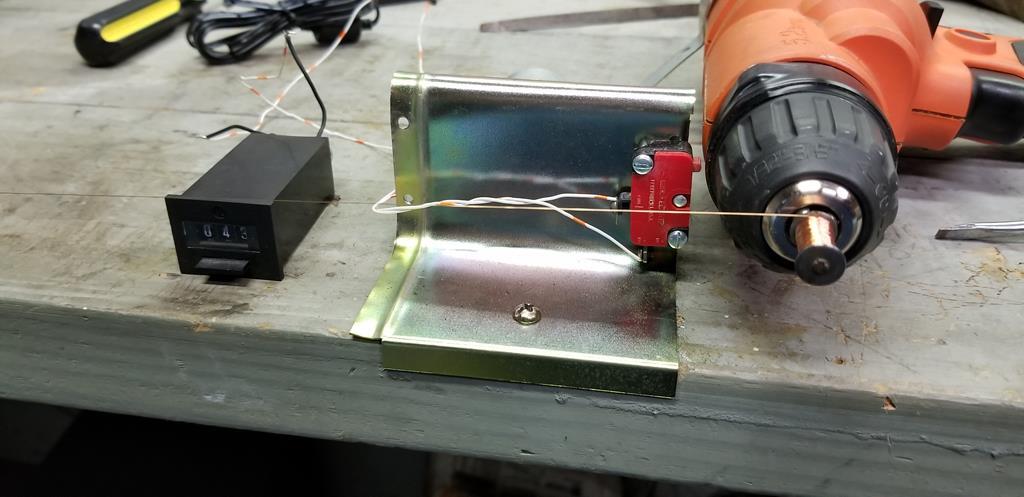 Tested the resistance, ballpark correct. 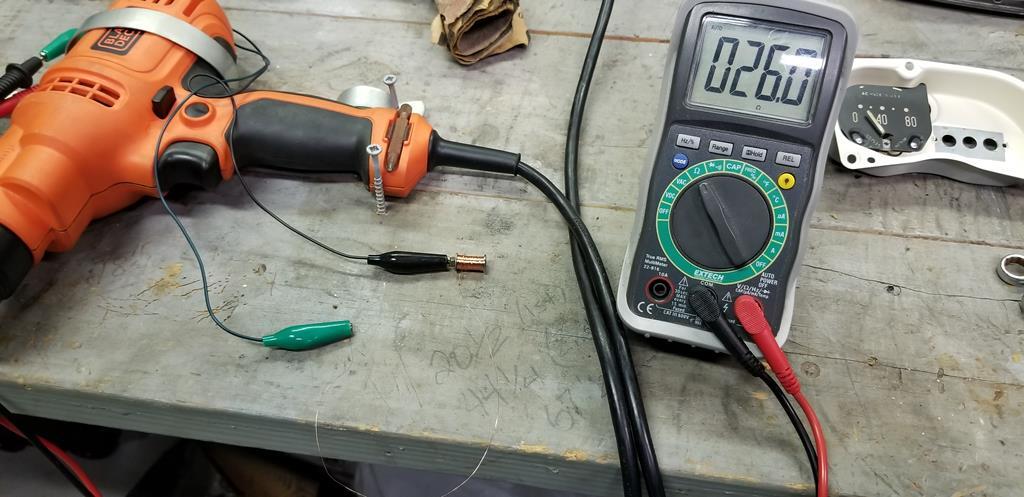 Took the other bobbin out. Burned black! 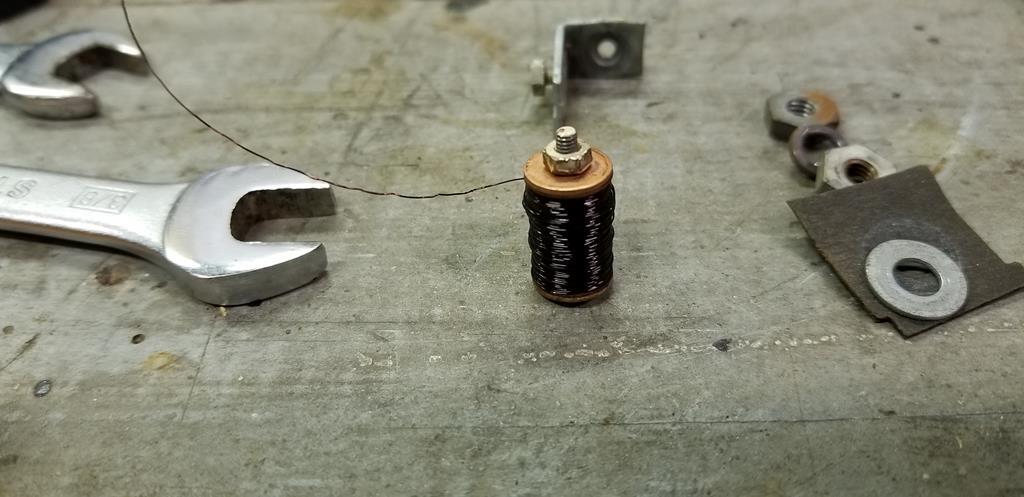 Unwound that, shedding flaky crispy enamel everywhere. 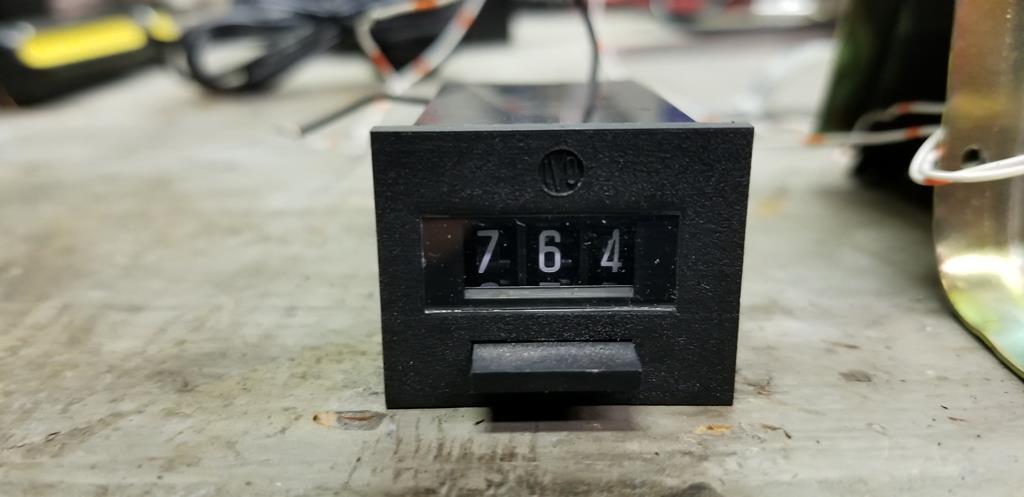 Checked the diameter, same as the other (figured it would be but doesn't hurt to check!). 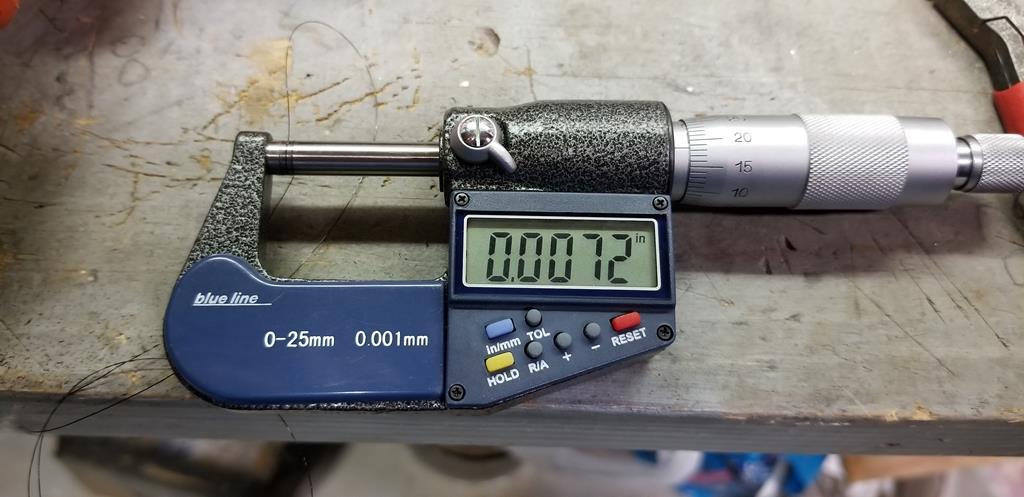 1500-odd turns later... 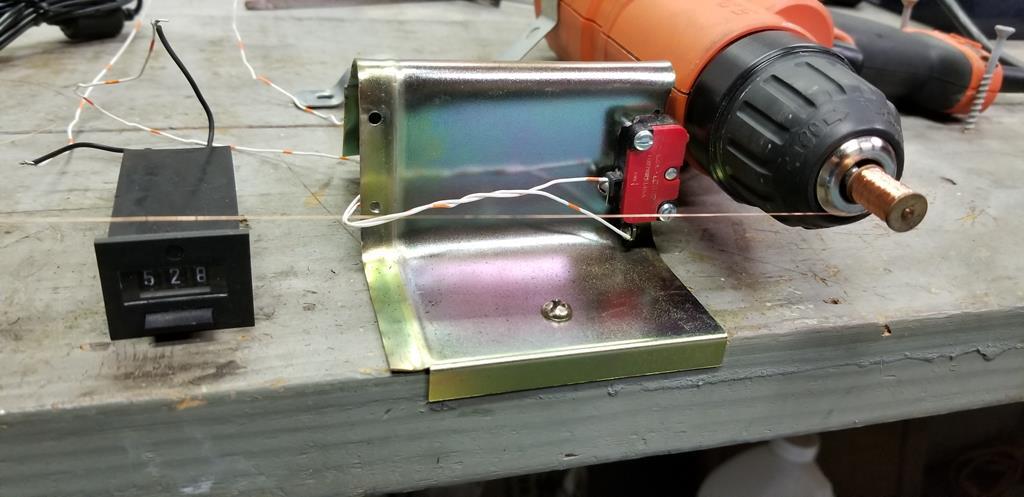 Checked the resistance, again ballpark. 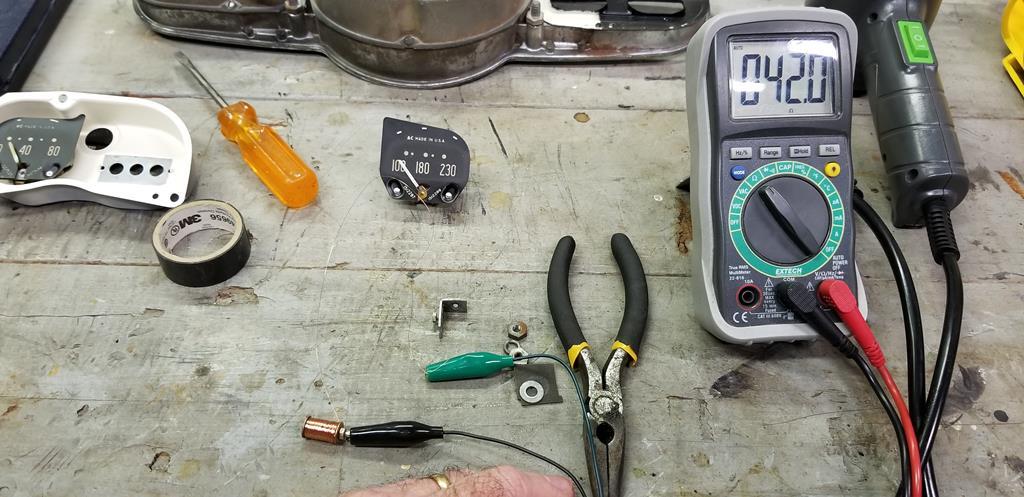 Mounted the coils in, soldered them to their pegs. 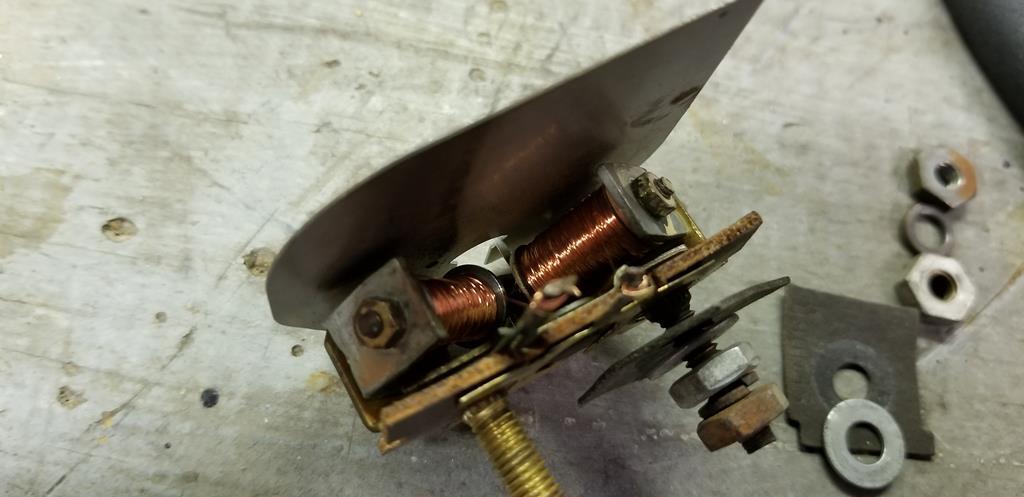 And presto! 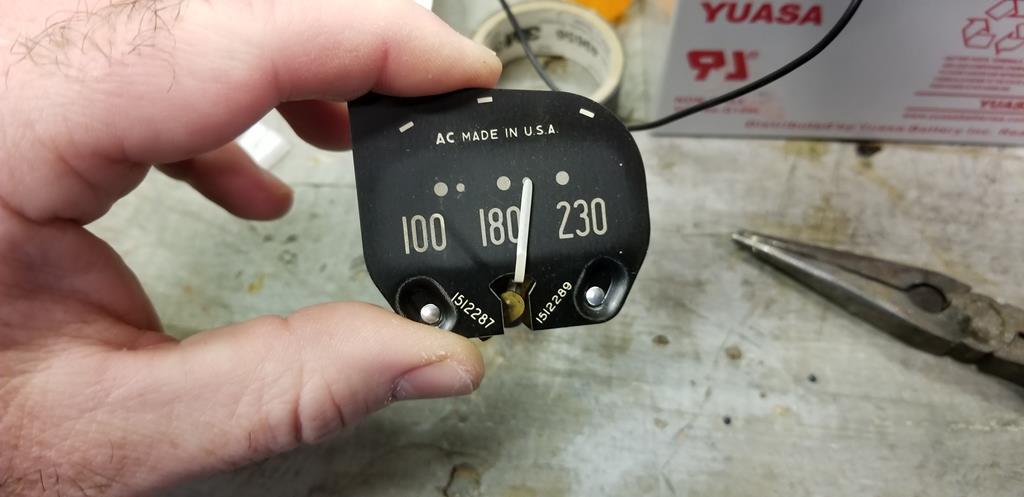 Need to calibrate it, but that's better than it was. Gets warm but not hot. I'm going to put it on battery tomorrow for an extended test and measure the temperature of the coils. The enamel is rated 155°C and the armature was merely warm after five minutes of initial adjustment. Phil |
| |
|
|
|
|
|
|
|
That's a great deal better than it was before !  |
| |
|
|
|
|
1951 Pontiac Chieftainpeteh1969
@peteh1969
Club Retro Rides Member 107
|
Nov 29, 2018 10:03:55 GMT
|
Well done Phil. Hy worry about trying to get a replacement when you can just re-engineer and improve what you have. Well done sir.  |
| |
|
|
|
|
|
Nov 29, 2018 10:40:43 GMT
|
|
supreme levels of attention to detail
|
| |
|
|
Speedle
Posted a lot
   Need a Country Rock band in the Hampshire Area? https://www.facebook.com/DirtRoadDiaryUK
Need a Country Rock band in the Hampshire Area? https://www.facebook.com/DirtRoadDiaryUK
Posts: 2,221
|
|
Nov 29, 2018 11:12:55 GMT
|
|
Immensely impressed in the attention to detail here and the ingenuity of the repair methods! Amazing!
|
| |
|
|
remmoc
Part of things
 
Posts: 931
|
|
Nov 29, 2018 16:42:13 GMT
|
Very impressed i must say , coils will get warm for sure . Id test at 13.8V if you can as thats about what the running voltage will be . Enamel will take a lot of heat but wont take a short or overload which is what seems to have happened to your original one . Well done , you can have a job at our place if you want .  Last thing i rewound for my car was this Denso stator . Trial winding to get more Amps on tickover which proved successful after two trials 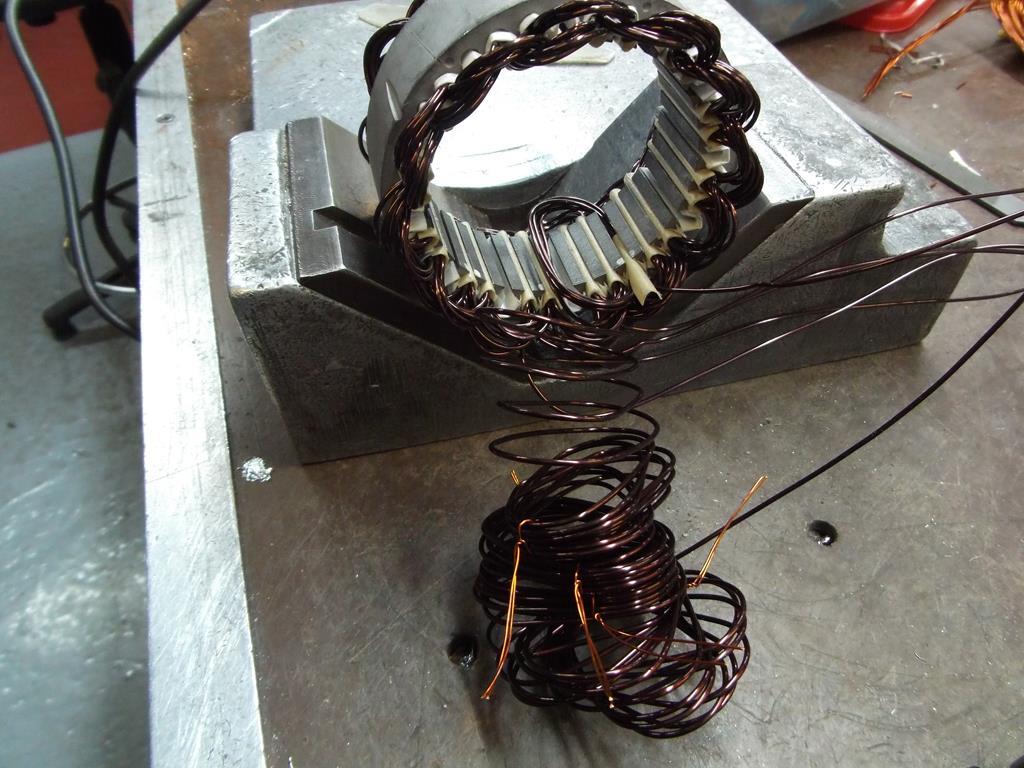 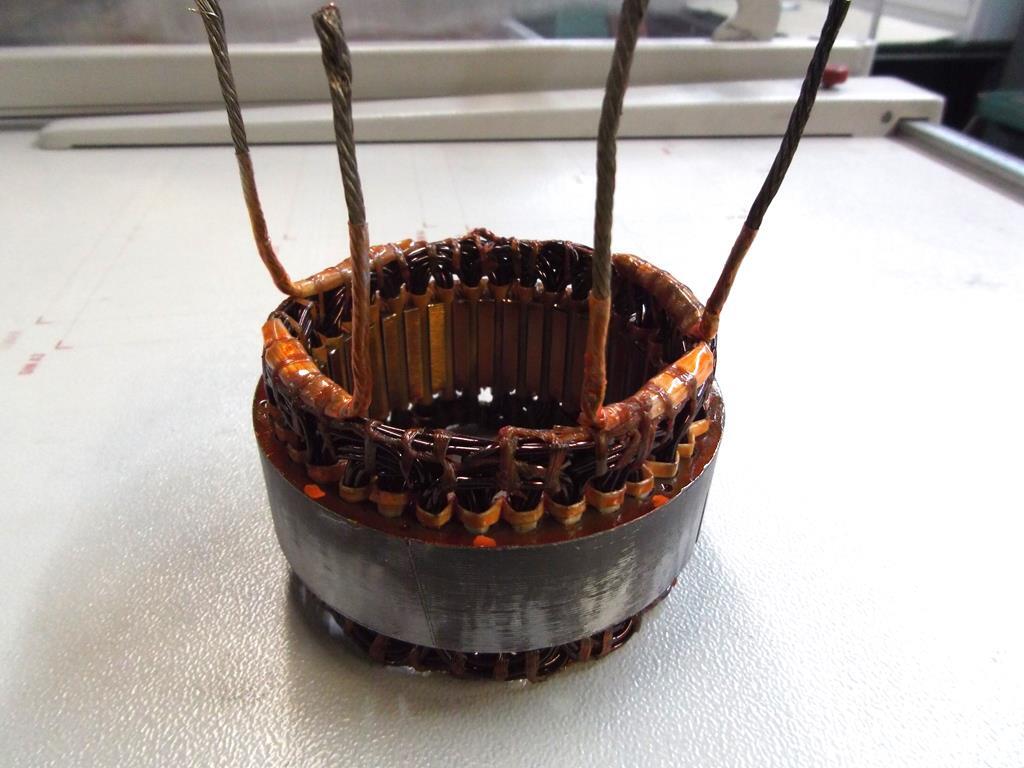 |
| |
Last Edit: Nov 29, 2018 16:49:55 GMT by remmoc
|
|
|
|
|
Nov 29, 2018 17:23:39 GMT
|
|
Yeah, they were 6V coils, connected to 12V.
I'm going to be putting them behind a regulator to keep a steady 12V and also provide over-current protection.
Phil
|
| |
|
|
remmoc
Part of things
 
Posts: 931
|
|
Nov 29, 2018 17:28:52 GMT
|
Yeah, they were 6V coils, connected to 12V. I'm going to be putting them behind a regulator to keep a steady 12V and also provide over-current protection. Phil Great idea , Not sure whats on yours but most british cars from the 60s and 70s had a voltage stabiliser for gauges which ran at a constant 10V , it was even adjustable to get it spot on . |
| |
|
|














 ) Did you burn the coating off the wire before measuring it ??
) Did you burn the coating off the wire before measuring it ??


















